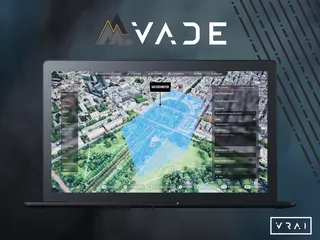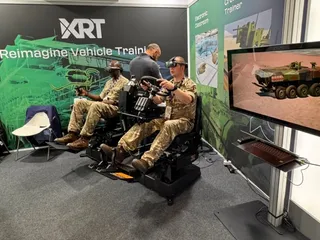Looking to the Future in Asian Ab Initio Pilot Training
Contact Our Team
For more information about how Halldale can add value to your marketing and promotional campaigns or to discuss event exhibitor and sponsorship opportunities, contact our team to find out more
The Americas -
holly.foster@halldale.com
Rest of World -
jeremy@halldale.com

Chris Long examines training providers in the Asia Pacific region and looks at some of the issues and challenges they have to deal with.
It has been recognised for some time that the growth of pilot demand in Asia would require considerable changes to the then existing pilot training infrastructure in the region. Whilst there were some relatively small flying clubs/schools which provided basic training, there were comparatively few centres where fully professional training could be carried out on the industrial scale needed to supply the very large number of new pilots.
That number is continually being revised upwards; the 2013 Boeing forecast estimated that the regional aircraft fleet will triple in the period 2014 to 2033 (from @5,500 aircraft to @15,000), so the number of crews will have to grow at a rate to meet that demand. Boeing also predicted that the number of pilots required for the region over the next 20 years would top 190,000 - the indications are that this year that number will again increase.
Singapore Solution
Whilst training providers around the world have been quick to step up towards this challenge, unsurprisingly the region itself has not been standing still. Starting from what was admittedly a low base, the surge in Aviation Training Organisations (ATOs) established in the region continues. Kevin Khoo, president ST Aerospace Academy, based in Singapore, has a very clear understanding of that market, and believes that the consolidation of regional ATOs, through expansion and airline buyouts, has provided the large scale investment in training which is now building towards a level able to sustain the necessary pilot supply.
Furthermore, those new and re-invigorated ATOs do not have the burden of legacy systems and equipment, and where freed by the regulators to do so, have quickly embraced new technology and instructional methods. Certainly considerations of access to airspace and cost continue to encourage some outsourcing to the USA and Australia. Whilst China can presently furnish some 70% of its present needs, and probably 50-60% of future demand, the number of students who need to go offshore for their training is more than sufficient to have other training suppliers vying for that trade. Australia and Malaysia are virtually self-sufficient in training capacity, as are both Thailand and Singapore. It should be noted, though, that increasingly countries are taking direct responsibility for those external operations.
Another issue has been the ability of the industry to attract new entrants of the right quality - and it is here that some variation in national attitudes within the region emerge. The principle of selection is now well understood, and where it is applied the quality of cadet pilots can be pretty much assured. A case in point is China, where the cadets are of a uniformly high standard. Aviation English is always a challenge, but can be overcome. Admittedly, trawling from a huge population group means that there is plenty of choice, but the end result is that plenty of talented applicants end up in the system. Elsewhere the pull of other high-tech and rewarding industries compete with aviation to attract the brightest and best, and this has a significant impact, but even with that in mind, only suitable candidates begin the courses.
Khoo's considerable experience has led him to the firm belief that another factor is critical to the industry's long term needs. It is not enough simply to recruit new entrants - these pilots need to be retained to stabilise and build the long-term numbers. The key to this is an individual's passion for the industry.
Khoo looks not just to the immediate potential, but to at least a 5 year period, by which time he notes a significant difference in performance in day to day operation between those who "merely" satisfy the mandated task, and those who have a real passion for the profession. The latter have a mindset which is constantly assessing and seeking improvement. This results in a deeper understanding of the basics and a willing adoption of improved systems and operating standards, and consequently, much increased operational effectiveness and resilience in the face of unexpected in-flight challenges. He would select a competent but passionate candidate over a brilliant student who is not fully engaged.
Whilst STAA is providing CPL/IR courses when requested by the customer, the accent is very much on the MPL syllabus. These can, and indeed must, be customised to the airline, but that process, whilst laborious in the production of checklists and airline policy, is not complicated. With the three parties (STAA/Airline/Regulator) closely working together, MPL courses have already been run for the Airbus A320, and ongoing projects are focussing on equivalents for the Boeing 737NG. The resounding success of the initial courses for Tiger Airways has provided a solid base, not just for new customers, but for iterations to further improve the course. Khoo attributed this success to the strong support and confidence of Tiger Airways and Civil Aviation Authority of Singapore. One of the major attributes of the MPL course is that, because it uses a high proportion of FTD with various capabilities, including FFS, it is far less subject to disruption due to bad weather, so that course scheduling and progress becomes much more efficient. One of the advantages of STAA being part of a large company, ST Aerospace, is that there are major resources which are being applied to R&D, so that new devices are being designed and will be manufactured to support the training programmes.
CTC Aviation
One example of the evolution of training in Asia is the encouraging expansion in the Asian market of CTC Aviation. Based in the UK, but needing access to more training facilities to cope with growing European demand, CTC Aviation looked further afield. The climate, air traffic system and English language base in New Zealand was identified as virtually replicating the European, in particular UK, training environment, so that training there could be seamlessly integrated into the course. Anthony Petteford, Group Chief Commercial Officer,is clear that the purpose-built facility at Hamilton, New Zealand, was primed to take the excess capacity from the UK base, principally to complete the practical (flight) phase of the course, and then the "natural" expansion was envisaged as addressing the domestic markets in New Zealand and Australia. It is the evolution of this plan that neatly illustrates the consequences of the growth in the Asian market and its demand for more pilots. The immediate follow-on turned out to be not so much the predicted domestic market, but rather a newly identified demand for a regional source of the well-respected European training model.
The relative proximity of New Zealand (certainly some way away from parts of Asia, but still close in shared Asian identity) is very attractive. The principle of having a known, respected and approved product so readily accessible has drawn a good number of Asian airlines, such as the Jetstar Group, Dragonair and Royal Brunei and, through a partnership with Oberlin University, Peach, Japan Airlines and ANA, and the list will certainly not stop there. The next step is now underway, with that original planned "Domestic" market now looking to CTC Aviation.
Petteford notes that "What is particularly interesting is that this choice was not primarily driven by price. The style of training, which embraces European quality and integrity, has proved to be very attractive to these Asian airlines. The growth here has also led to the establishment of full ground school facilities so that trainees need not be sent to Europe for any part of the course. Regulatory authorities with oversight responsibility for the sponsoring airlines have issued approval for the courses carried out here in New Zealand. In addition, a by-no-means insignificant additional bonus of this location is the close proximity of all the lifestyle attractions for which New Zealand is rightly famous. Extra-curricular activities, such as team building, in which "soft" skills essential to the pilot's career can be carried out in the most attractive of locations"
In part to manage the continuing demand from Asia, particularly from China and India, CTC Aviation has recently opened up a facility in Phoenix, Arizona. This will use the CTC Aviation template to furnish the European model of intensive training to an even broader market.
Future View
In what may be the clearest prediction of the future of ab initio pilot training in the region, Khoo states that "I am convinced, as is STAA, that MPL will be the dominant training methodology in 5-10 years. The "classic" CPL/IR is no longer as effective in preparing professional pilots for the current and future generation of aircraft. Not only are the syllabus and technologies sometimes inappropriate, but a significant proportion of the skills and technology have to be "unlearnt" in order to operate present aircraft effectively. With an MPL system the entire 18 month training process, including a Type Rating, is focussed on technology and skills essential for competent operation, whereas a CPL/IR graduate has to pack all this knowledge into, at most, a six month top up course which includes an additional Type Rating. Beyond a shadow of doubt MPL is very effective and must be the way forward."


